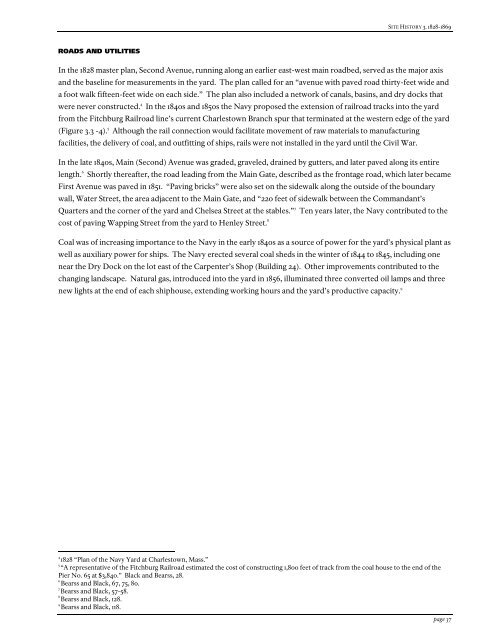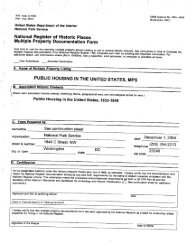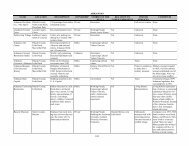Cultural Landscape Report for Charlestown Navy Yard, Boston
Cultural Landscape Report for Charlestown Navy Yard, Boston
Cultural Landscape Report for Charlestown Navy Yard, Boston
Create successful ePaper yourself
Turn your PDF publications into a flip-book with our unique Google optimized e-Paper software.
ROADS AND UTILITIES<br />
SITE HISTORY 3. 1828-1869<br />
In the 1828 master plan, Second Avenue, running along an earlier east-west main roadbed, served as the major axis<br />
and the baseline <strong>for</strong> measurements in the yard. The plan called <strong>for</strong> an “avenue with paved road thirty-feet wide and<br />
a foot walk fifteen-feet wide on each side.” The plan also included a network of canals, basins, and dry docks that<br />
were never constructed. 4 In the 1840s and 1850s the <strong>Navy</strong> proposed the extension of railroad tracks into the yard<br />
from the Fitchburg Railroad line’s current <strong>Charlestown</strong> Branch spur that terminated at the western edge of the yard<br />
(Figure 3.3 -4). 5 Although the rail connection would facilitate movement of raw materials to manufacturing<br />
facilities, the delivery of coal, and outfitting of ships, rails were not installed in the yard until the Civil War.<br />
In the late 1840s, Main (Second) Avenue was graded, graveled, drained by gutters, and later paved along its entire<br />
length. 6 Shortly thereafter, the road leading from the Main Gate, described as the frontage road, which later became<br />
First Avenue was paved in 1851. “Paving bricks” were also set on the sidewalk along the outside of the boundary<br />
wall, Water Street, the area adjacent to the Main Gate, and “220 feet of sidewalk between the Commandant’s<br />
Quarters and the corner of the yard and Chelsea Street at the stables.” 7 Ten years later, the <strong>Navy</strong> contributed to the<br />
cost of paving Wapping Street from the yard to Henley Street. 8<br />
Coal was of increasing importance to the <strong>Navy</strong> in the early 1840s as a source of power <strong>for</strong> the yard’s physical plant as<br />
well as auxiliary power <strong>for</strong> ships. The <strong>Navy</strong> erected several coal sheds in the winter of 1844 to 1845, including one<br />
near the Dry Dock on the lot east of the Carpenter’s Shop (Building 24). Other improvements contributed to the<br />
changing landscape. Natural gas, introduced into the yard in 1856, illuminated three converted oil lamps and three<br />
new lights at the end of each shiphouse, extending working hours and the yard’s productive capacity. 9<br />
4<br />
1828 “Plan of the <strong>Navy</strong> <strong>Yard</strong> at <strong>Charlestown</strong>, Mass.”<br />
5<br />
“A representative of the Fitchburg Railroad estimated the cost of constructing 1,800 feet of track from the coal house to the end of the<br />
Pier No. 65 at $3,840.” Black and Bearss, 28.<br />
6<br />
Bearss and Black, 67, 75, 80.<br />
7<br />
Bearss and Black, 57-58.<br />
8<br />
Bearss and Black, 128.<br />
9<br />
Bearss and Black, 118.<br />
page 37







